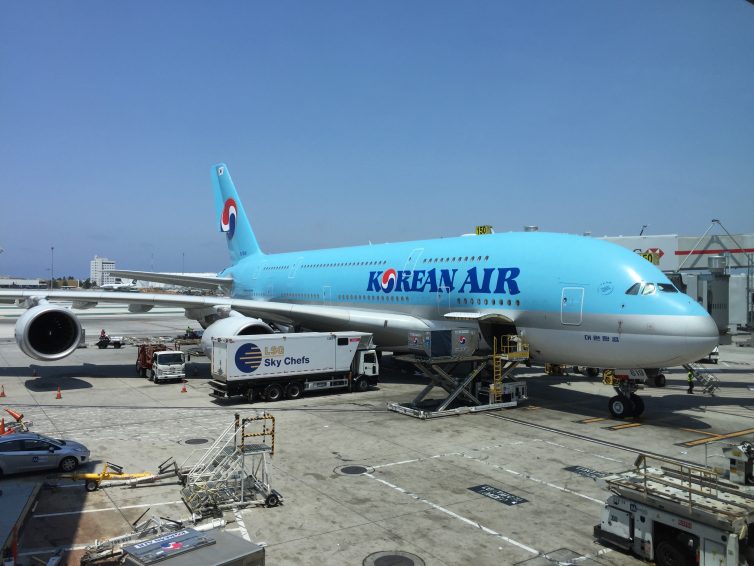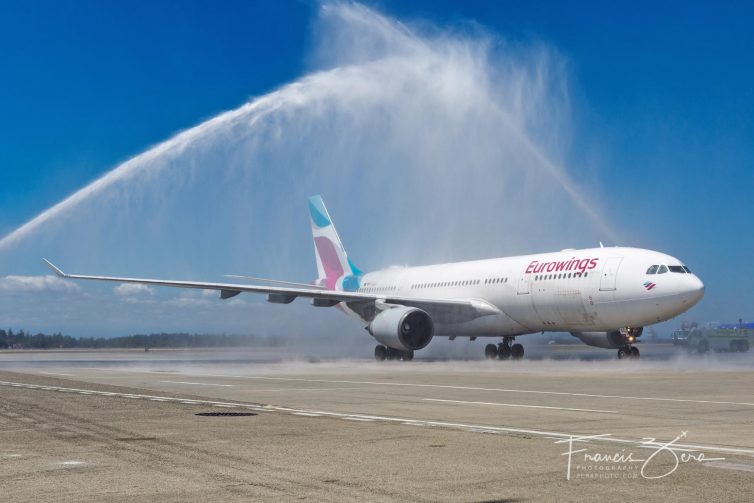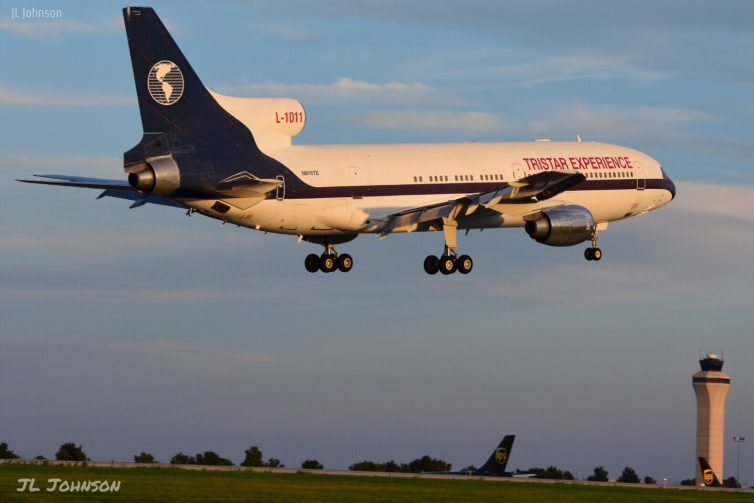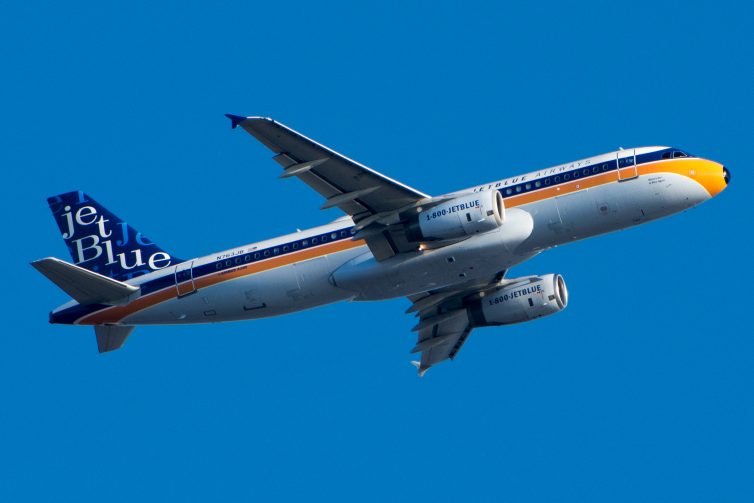
Last month, I wrote about the amazing time I had flying seat 1A on a United 747. I mostly focused on the 747 and the awesome view from my seat, which may have left some of you wondering about my experience with United’s so-called “Polaris Global First.” It’s a cabin class that won’t exist for much longer, as United is phasing out long-haul first class as part of its long-awaited Polaris rollout.
Well I’m back with an in-depth review of the Polaris Global First seat, service, food, features, and more. Did the experience leave me delighted or disappointed? Should you be rushing to try Polaris Global First out before it’s gone for good? Read on to find out.

The Korean Air A380 readies for departure at LAX – Photo: Kevin P Horn
This summer, my partner Natalie and I decided that we wanted to visit one or two cities in Asia during the short window that we had off. I researched the airlines, routes, and cities that we were interested in flying to and ended up choosing Seoul and Tokyo for stops. I had accrued about 200,000 points through Chase credit cards and started looking through redemption options. A friend of mine pointed me towards Korean Air, since they were partnered with Chase for 1-1 transfers and had an excellent 62,500 mile redemption (63,000 since I could only transfer in 1000 point increments) for business class to Asia one-way. These flights had the option to select a multi-day stopover in Seoul, so it precisely lined up with our travel goals.
I booked two one-way flights to Tokyo Narita (NRT) in Korean Air Prestige class with a five-day stopover in Seoul (ICN). I ended up booking a return with United Airlines on an Economy Saver redemption for 35,000 miles. But I’m not writing this to talk about United economy; flying on the upper deck of both an A380 and Queen of the Skies 747-400 is much more interesting.

It never gets old: Sea-Tac’s fire department welcomes Eurowings to Seattle with a traditional turret salute.
Germany-based discount airline Eurowings launched thrice-weekly service to Seattle from Cologne on July 11, using Airbus A330s for the route. Eurowings is owned by Lufthansa Group..

Lockheed L-1011 TriStar does a fly-by of Kansas City International Airport. – Photo: JL Johnson. Not for use elsewhere.
The Lockheed L-1011 TriStar was a plane with a tragically short lifespan. It was expected to be a real contender against the Boeing 747, Douglas DC-10, and Airbus A300. It entered the market late, in large part due to delays resulting from difficulty at Rolls-Royce, the only engine producer for the TriStar. Despite this, it is one of just a few airliners that elicits strong emotion from people of all ages and walks of life. It was received with much fanfare.
In business, however, fanfare does not necessarily equate to economic viability. In roughly two decades, just 250 units were produced – including an incredible number of custom variants. Few operators held onto their L-1011s for long before passing them along to others or sending them to storage. By most accounts, the TriStar was a failure. During development of the only TriStar engine option, the RB211, Rolls-Royce was deemed what modern day observers would call “too big to fail.” It was nationalized to avoid catastrophic economic impact to the United Kingdom and to keep the costly program afloat. Following the cancellation of the series, Lockheed fully withdrew from the commercial airliner market to focus on military and other industries.
But struggles in development, lackluster sales, and frequent turnover did not get in the way of the passion shared by those who had in some way experienced the TriStar. It was and is one of the most beloved planes in AvGeek culture. The TriStar was an underdog. People love an underdog story, and that is just what this is.
We’ll admit it, there has been a lack of content here on AirlineReporter recently. Blame the summer lul, laziness, craziness, or whatever you want, but it’s true. While I don’t have any actual content for you, I figured I could at least publish some cool airplane pictures. So…here they are! Enjoy.

The JetBlue “Retrojet”
Take a look for more…




